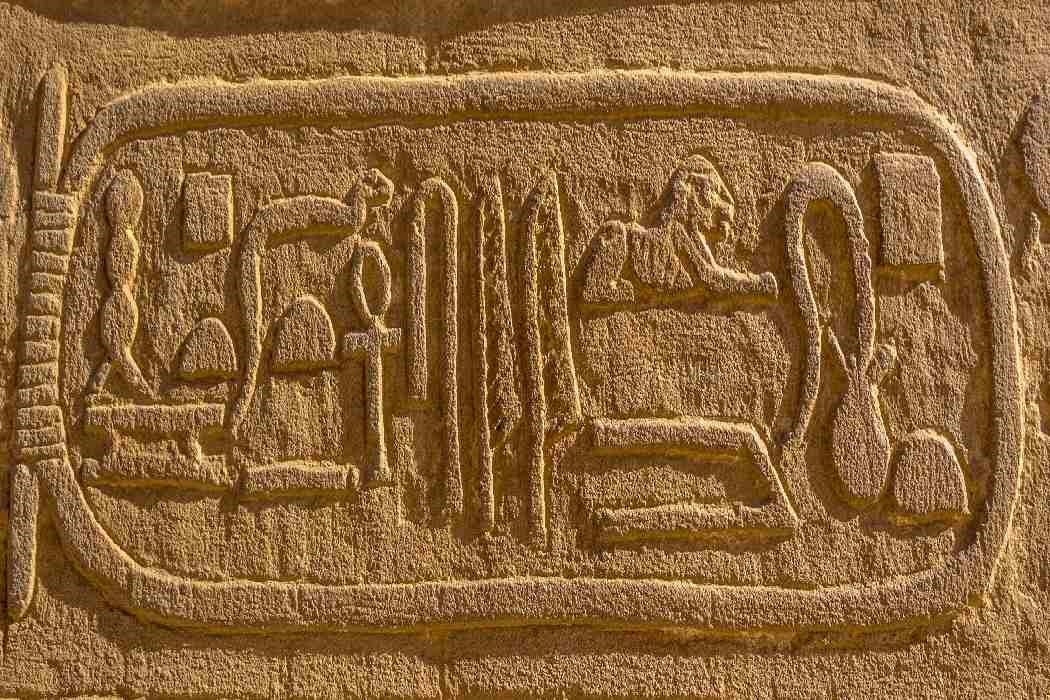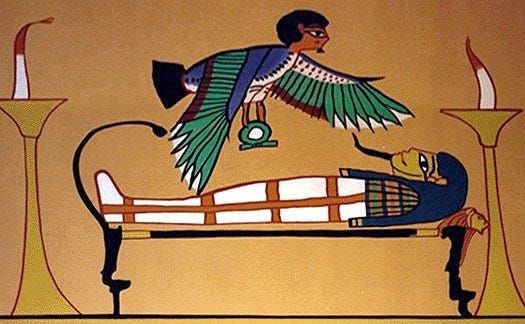Magic Circles
Unravelling the Mysteries of Ancient Egyptian Cartouches, Shen Rings, Magic Knots, and Magic Circles
The cartouche is one of the most recognized symbols in Egyptology. Depicted as twin ovals of rope encircling a pharaoh's name, it is widely considered a protective symbol. But what exactly did it protect? This article delves into the cartouche's possible meanings and functions, linking it to magic circles and protective knots in ancient Egypt.
The Cartouche and its Origins
The cartouche was first identified in royal architecture by Flinders Petrie in the 19th century. Although some of his theories haven't aged well, his identification of the cartouche as a protective symbol remains influential. David Lightbody’s research suggests that the cartouche, inspired by the shen ring, began in the Third Dynasty as a form of encircling protection, particularly in Old Kingdom pyramids.
A cartouche, in hieroglyphics, is an oval encircling a royal name, first used under Pharaoh Sneferu. Lightbody asserts that the cartouche evolved from the shen ring, a circular symbol representing eternal protection. Over time, the cartouche became a significant architectural motif, tied to rituals ensuring the protection of tombs and temples. Royal symbols like the falcon god Horus and the vulture goddess Nekhbet were closely linked to these encircling symbols, reinforcing their protective power.
The Shen Ring and Protection
The shen ring symbolized eternal protection, often associated with deities like Nekhbet and Wadjet, representing Upper and Lower Egypt. Lightbody describes how these symbols were depicted on tomb entrances and other architectural features, creating a symbolic barrier of protection.
Lightbody concludes that the cartouche, like the shen ring, was more than a decorative element; it was central to royal ideology. The symbol’s use in royal architecture affirmed the pharaoh’s divine protection and authority.
The Cartouche as an Amulet
The cartouche’s protective function may also be likened to an amulet. Although not worn by the pharaoh, the cartouche symbolized protection for the monuments it adorned. The question arises—was it protecting just the royal name or something broader?
According to the Metropolitan Museum of Art, amulets in ancient Egypt were believed to confer magical powers, often through their form, materials, and rituals associated with them. In this light, the cartouche acted as a kind of amulet for royal buildings, ensuring protection for the king and his legacy.
Magic Circles and Protection
The cartouche also functions as a "magic circle," a common element in various ritual practices. Magic circles traditionally create a protective boundary between the ritualist and external forces. In ancient Egypt, the cartouche's circular form might have symbolized protection from chaos, the ever-present threat of disintegration that the Egyptians feared.
The Importance of the Name
In Egyptian belief, a name was vital to a person’s existence. To protect the pharaoh’s name was to ensure his eternal survival. Each pharaoh had multiple names, representing different aspects of their power. The cartouche, with its twin ropes, may have symbolized protection not just for the king’s name, but for his cosmic existence and legacy. The name was, in a sense, the essence of the pharaoh’s identity, and the cartouche kept that essence intact for eternity.
The Cartouche as Ownership
Alternatively, the cartouche might have been a symbol of ownership. Like a signature, it marked a pharaoh’s domain. During the Amarna Period, cartouches were often used as amulets or seals, suggesting their dual purpose as both protective and symbolic.
Knots and Magic
Knot-tying held magical significance in Egypt. The cartouche, resembling a rope with a whip binding, can be seen as a magical knot symbolizing unity and protection. The tying of knots was a powerful ritual, reinforcing the idea of cosmic order and stability.
Conclusion
Ultimately, the cartouche was a powerful symbol of eternal protection, unity, and divine authority. It preserved the pharaoh's name and ensured his survival in the afterlife. More than just a decorative feature, it was a fundamental part of Egyptian religious and royal ideology, reflecting the ancient belief in the power of words, names, and symbols to transcend time.Building a New Bridge to Understanding Ancient Egypt is a reader-supported publication. To receive new posts and support my work, consider becoming a free or paid subscriber.
Sources
1. [1] "Lightbody, D., 2012. The Encircling Protection of Horus. Proceedings of the Twelfth Annual Symposium Current Researches in Egyptology, 2011, University of Durham. Abd El Gawad, H. et al. Ed. Oxford: Oxbow: 133-140.
2. [2]Cunningham, Scott (2001). Wicca: A Guide for the Solitary Practitioner, 29th edition, Llewellyn Publications.
3. [3] Assmann, J. Death and Salvation in Ancient Egypt, Trans: David Lorton, Cornell University Press, Ithaca and London, Original German edition, © 2001 by C. H. Beck, Munich.
4. [4] The American Discovery of Ancient Egypt, (Nancy Thomas, Gerry D. Scott, Bruce G. Trigger, Los Angeles County Museum of Art, 1995.)
5. [5] Leprohon, R, The Great Name, Ancient Egyptian Royal Titularly, Society of Bible Literature Atlanta, 2013.






Thanks so much. Reading the article again I can see it's a bit of a ramble but I'm glad you got through it and found it interesting. I promise to work hard on getting a snappier style!